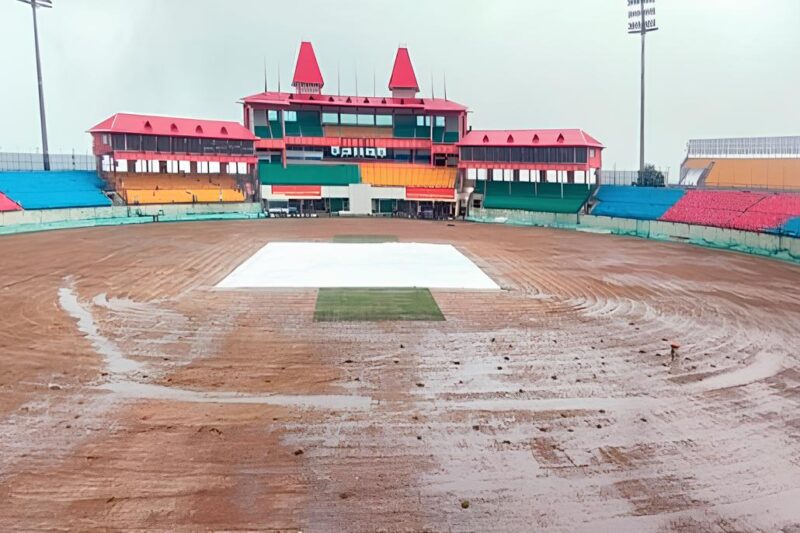Himachal Pradesh government to borrow Rs 200 crore through a fresh loan to fund the three percent dearness allowance announced for employees and pensioners ahead of Diwali, according to a gazette notification issued by the Finance Department on Friday. The loan amount is expected to be credited to the government’s account on October 29.
The borrowing comes barely a week after Chief Minister Sukhvinder Singh Sukhu announced the DA hike at the Electricity Board Employees Union convention, positioning it as a festive gift for the state’s workforce. The three percent DA, along with arrears from April to September 2025, was to be credited before Diwali, with the regular DA to be paid with October salaries in November.
Departmental officials have confirmed that the loan became necessary specifically to meet the DA commitment, revealing the fragile state of the government’s treasury management even for routine expenditure obligations.
The debt trap deepens
The Rs 200 crore loan, while modest in absolute terms, symbolizes a deeper malaise in Himachal’s finances. The state’s debt burden has already surpassed Rs 1,04,729 crore, making it the third most debt-stressed state in India.
What makes this borrowing particularly concerning is its purpose. Unlike loans taken for infrastructure development or capital expenditure, this borrowing is purely to meet current consumption expenses—paying salaries and allowances that should ideally come from the state’s regular revenue.
Of every Rs 100 the government spends, Rs 25 goes to salaries, Rs 20 to pensions, Rs 12 to interest payments, Rs 10 to debt repayment, and Rs 9 to grants for autonomous bodies, leaving just Rs 24 for development. Adding more debt to pay salaries further shrinks this already minimal development space.
The timing of the DA announcement and the subsequent loan reveals a familiar pattern of pre-festival announcements that create immediate political goodwill while postponing the fiscal reckoning.
The announcement came during an electricity board union event, maximizing political visibility. The government also released arrears from April-September 2025 before Diwali, ensuring employees received a lump sum during the festival season. Separate orders for pending arrears from July 2023 to March 2025 were promised later.
This staggered approach—releasing some arrears now while deferring others—suggests the government is managing cash flow on a month-to-month basis, borrowing specifically to meet immediate political commitments.
The three percent DA increase affects approximately 2.5 lakh government employees and 1.7 lakh pensioners across all departments. Individual employees received amounts ranging from Rs 8,000 to Rs 40,000 as arrears for the six-month period.
While Rs 200 crore may seem insufficient for such a large workforce, the notification likely covers only a portion of the total DA liability, with additional tranches to follow. The government also released Rs 2,200 crore specifically for Electricity Board employees’ benefits, indicating the scale of commitments being managed simultaneously.
The DA increase follows the Union Cabinet’s decision on October 1 to raise DA for central government employees from 55% to 58%, effective July 2025. Most states subsequently announced similar increases for their employees.
However, while financially robust states could absorb this increase from their regular revenues, Himachal’s dependence on borrowing for the same purpose underscores its precarious fiscal position.
Chief Minister Sukhu acknowledged that “despite the state government providing OPS to employees, pressure from BJP leaders led the central government to halt additional borrowing”, suggesting friction with the Centre over Himachal’s borrowing plans.
The reducing Revenue Deficit Grant from the central government—from Rs 6,258 crore last year to Rs 3,257 crore in 2025-26—has created a revenue crunch that forces the state to borrow even for routine expenses.
Political blame game
The Chief Minister claimed the current government “inherited a debt of Rs 75,000 crore and employee liabilities of Rs 10,000 crore” from the previous BJP regime, framing the current crisis as a legacy issue.
However, of the Rs 29,046 crore borrowed during the Congress government’s tenure since December 2022, 70% was used to repay old debts and interest, with only Rs 8,093 crore available for development. This means while old debt is being serviced, new debt is accumulating for routine expenditure.
The opposition BJP has questioned the utilization of borrowed funds, pointing out that “with the central government’s Rs 11,000 crore funding, the state government had been using Rs 1,000 crore each month just to pay salaries”.





